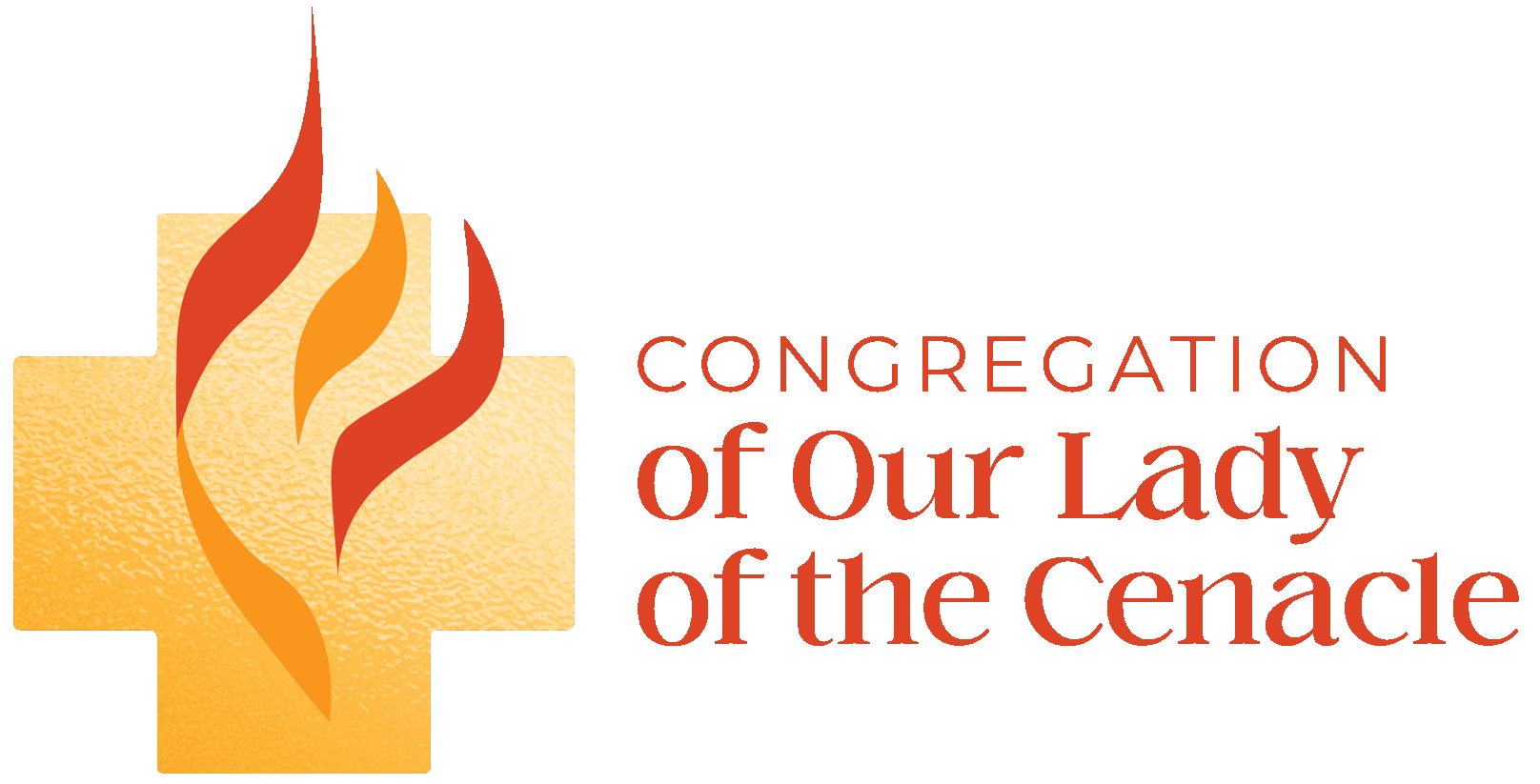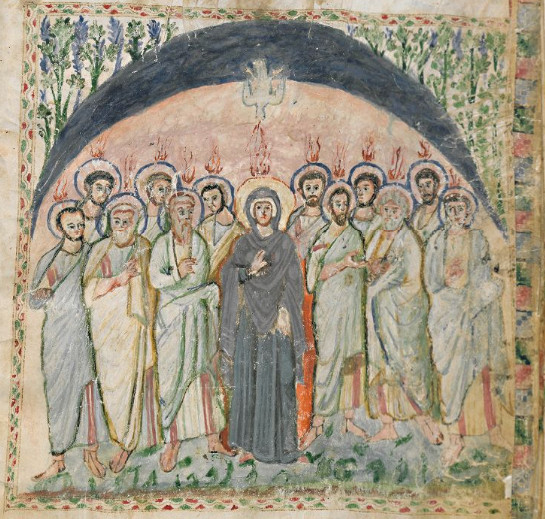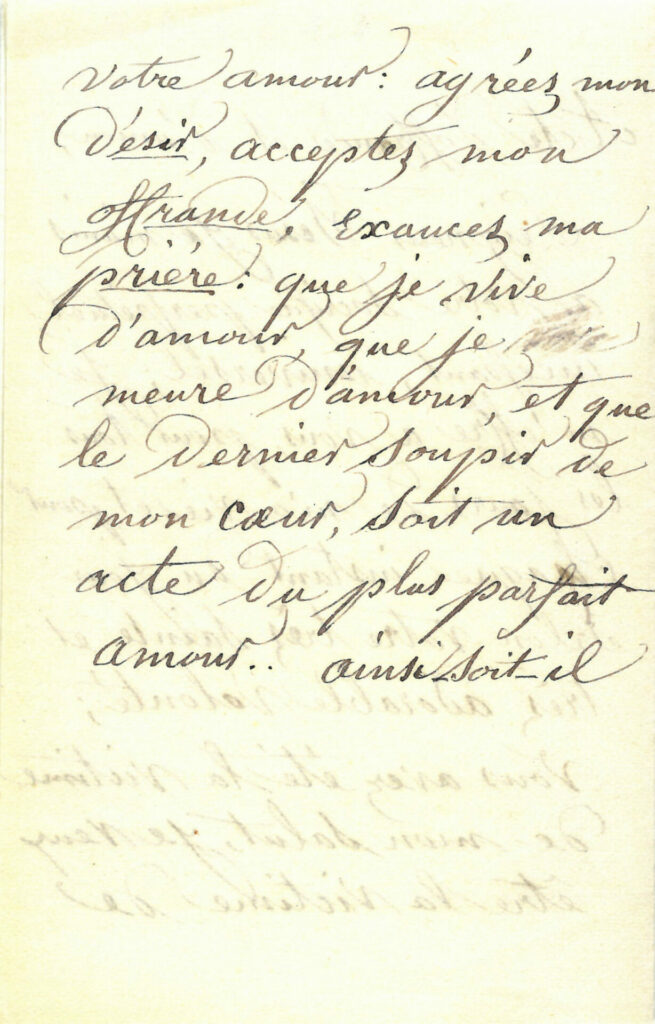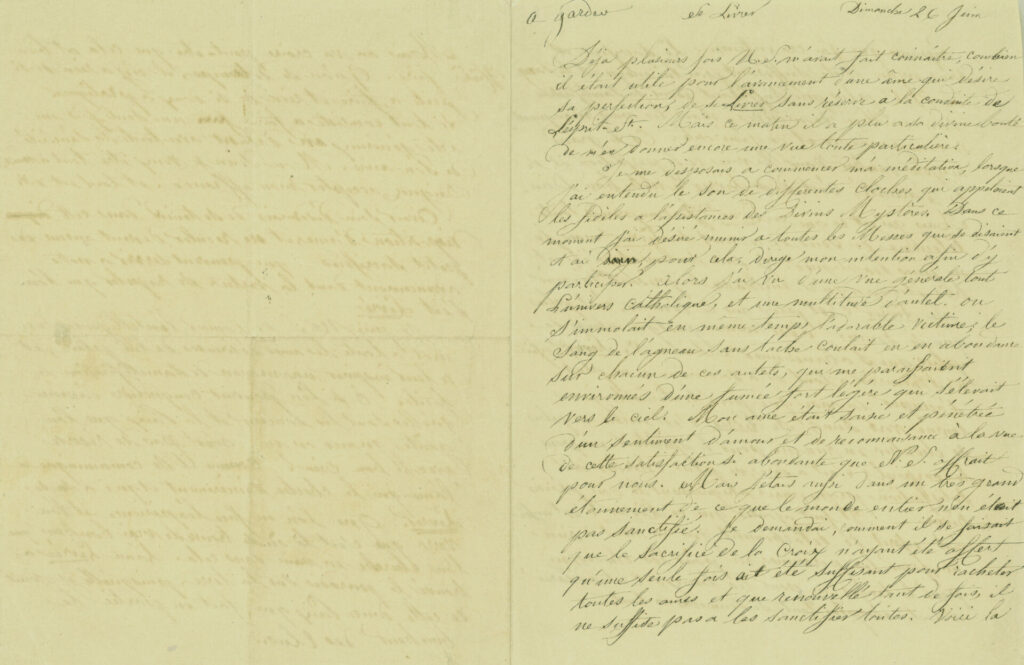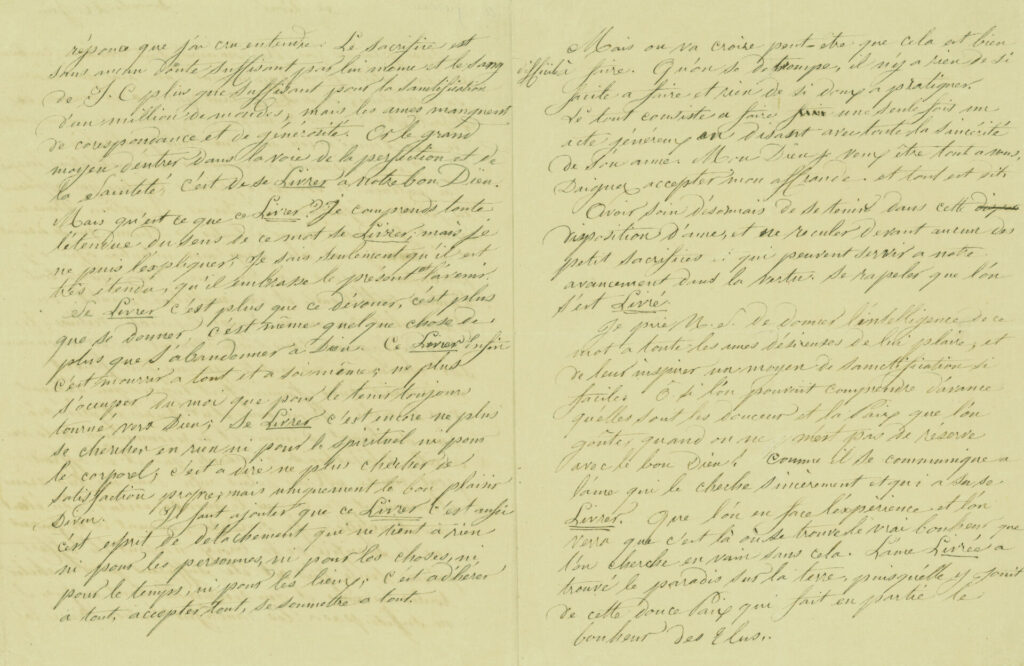Rabbula Gospels (a 6th-century illuminated Syriac Gospel Book), Florence, Biblioteca Medicea Laurenziana, cod. Plut. I, 56, fol. 14v
In the Eastern Church, the Spirit is frequently presented as the feminine in God, hovering over the egg of the world with its warm wings, and thus giving birth to the world.
The Spirit is likewise the principle of the second creation, as if realising again the Father’s plan in a maternal manner. The Spirit overshadows Mary at the conception of Jesus (c.f. Lk.1:35); the Spirit is there at the baptism of Jesus, identifying him as beloved Son, Messiah (c.f. Lk.3:2l-22; Jn.1:32ff; Mt.3:13-17); it is the Spirit who impels Jesus towards ministry (c.f. Lk.4:l4); the Spirit is there when, in the experience of resurrection, Jesus becomes Risen Lord through the power of the Spirit (c.f. Rom.1:4; Acts 13:33).
In history, it is always the Spirit who exercises this ministry of “giving identity”, which ultimately takes on a definitive shape in the Church.
Because of the outpouring of the Holy Spirit on the first believers who were gathered together with Mary in the Cenacle, in the expectation of the fulfilment of Jesus’ promise, they are constituted “church”. A totally new identity is made possible. It is one which is at once personal and deeply interior, yet relational and apostolic (c.f. Acts 1:4-5, 8, 12-14; Acts 2:lff).
The Spirit is ever conscious of the need for the Church to be nurtured and nourished. Under the Spirit’s influence, religious families were formed to which “the Church gave welcome and approval”.[1]
Impelled by a love which the Holy Spirit has poured into their hearts, these Christians spend themselves ever increasingly for Christ, and for His body, the Church (Col.l:24).
Hence, the more ardently they unite themselves to Christ through a self-surrender involving their entire lives, the more vigorous becomes the life of the Church and the more abundantly her apostolate bears fruit.[2].
We have already noted the mysterious outpouring of the Holy Spirit upon the men and women gathered together with Mary. The Greek of Luke tells us that this was no mere assembly of people gathered in the faint wish that “something might happen”. Luke translates “waiting, persevering in prayer” to mean literally “plunged into prayer”. Already, there is a vigour, an active receptivity in the very manner in which the Spirit is awaited in this assembly. It was not a gathering of isolated individuals, but of men and women who were known as those who had been “with Jesus” (c.f.Lk.8:1-3; Jn.19:25; Mt.26:69).
Sr. Anne Powell rc
extract from “The Image of the Cenacle in the Spirituality of the Congregation of Our Lady of the Retreat in the Cenacle”, Institute of Spirituality, Gregorian University, Rome, 1984
.
